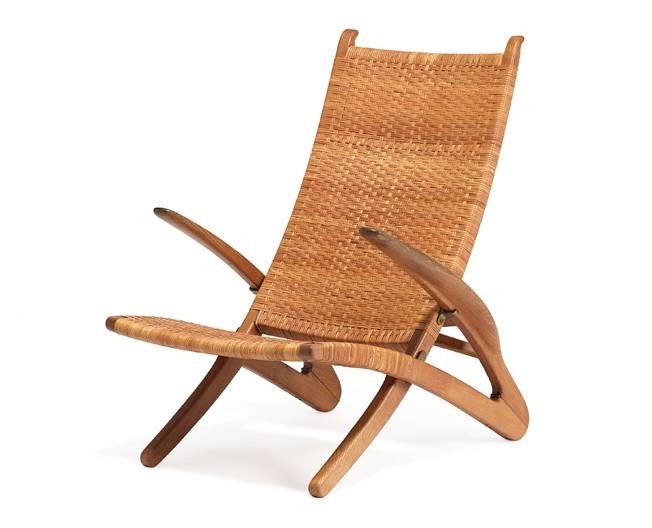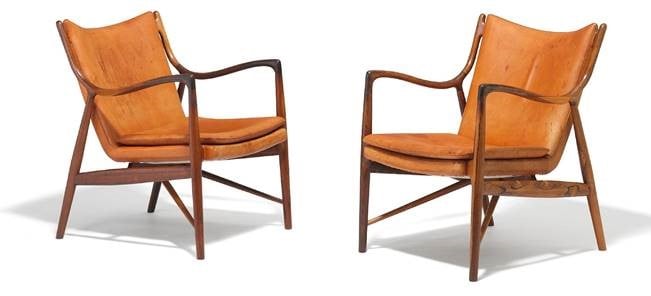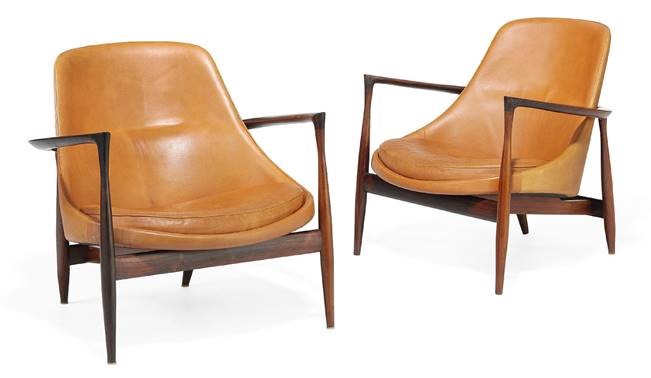Auctions
artnet Asks: Bruun Rasmussen Auctioneers on Nordic Design
The company has operated under three generations of the Rasmussen family.

The company has operated under three generations of the Rasmussen family.

Artnet News

Opened in 1948, Bruun Rasmussen Auctioneers is run by Jesper Bruun Rasmussen and his two children, Frederik and Alexa Bruun Rasmussen. Initially focussing on fine art and antiques, today the auction house has broadened to include a diverse range of collector’s items including books, stamps, coins, wine, and, in particular, Nordic design.
Coming up is Bruun Rasmussen Auctioneers’ multiday, international auction of Modern and contemporary fine art, decorative art, and design, including works by Willem de Kooning and Finn Juhl, among many others. For a full schedule, visit their list of upcoming auctions here, and preview the March 10 upcoming design auction here.
Bruun Rasmussen has recently entered the Nordic design market in North America. Can you describe the ethos of Nordic design in three words?
Craftsmanship, human, and functionality.
There is a clear connection to nature in Nordic design, which in a very basic way creates a kind of wellbeing when you surround yourself with it. The connection is not only through the materials used, such as wood, but also through the organic shape of the designs.
There is also a kind of understated, implied exclusivity in Nordic design, which is less noisy than designs from other parts of the world.
In a modern world where very visible signs of wealth have become prevalent, traditional status symbols are now being replaced by the more subtle Nordic look, where you get close to nature. Nordic design creates a very human framework that is simply nice to be in—where the furniture itself is signalling human values.

Finn Juhl, FJ 45 (1960s). Courtesy of Bruun Rasmussen Auctioneers.
What are some must-have Nordic pieces that new collectors should have their eyes on?
New furniture collectors should go for the vintage, handcrafted furniture designed by cabinetmakers in Copenhagen from about 1930–1970. Within this group, there are many pieces to choose from with some achieving “blue chip” status—icons such as Finn Juhl’s “FJ-45” chair, Ib Kofod-Larsen’s “Elizabeth” chair, and Hans J. Wegner’s “Dolphin” chair. But a shared feature of all Nordic vintage furniture in general is that the pieces are extremely well-made.
Do you have advice for integrating Nordic design into an apartment?
Bruun Rasmussen’s head of design, Peter Kjelgaard, believes that new architecture, including Modern interior design, is becoming increasingly inspired by the Nordic design tradition. “Often one sees a strong focus on both artificial and natural light,” Mr. Kjelgaard explains, “and their influence on wood as a material. I think you have to use Nordic design in a pragmatic way, so it makes sense in your life. Original vintage furniture designs create an ambiance of authenticity. You can easily give the furniture a more contemporary look with a new cover or padding.”
How did the Internet change the auction business?
Bruun Rasmussen began to conduct online auctions in 2004, where it was one of the first auction houses in the world to host both traditional auctions and online auctions. Today, the two sales channels each represent an equal share of our turnover, and allow for a price range between a few thousand Danish Kroner to several million. In recent years, we have also begun to stream our traditional auctions online and offer live bidding via the Internet. So the Internet is very important for our business, since it allows customers worldwide to buy and sell through our auction house very easily. We also see a large “crossover” between the two formats, where online customers participate in our traditional ‘offline’ auctions and vice versa. Our presence online also means an increased availability, now that we are open for business 24/7.
How has participating in design fairs affected your auction business?
During recent years, Bruun Rasmussen has participated in a variety of design fairs and exhibitions around the world to promote the auction house in front of an international audience. For instance, we exhibited a tapestry by Le Corbusier at the Collective Design Fair in New York. This helped raise awareness of the sale among new customers and international media, and it led to an extremely successful auction result. This kind of service to our customers is an important part of our growth strategy, and we are in the fortunate position that our customer loyalty is very high, so the support for this type of promotion work is clearly there among our customer base.

Ib Kofod-Larsen, Elizabeth (1960s). Courtesy of Bruun Rasmussen Auctioneers.